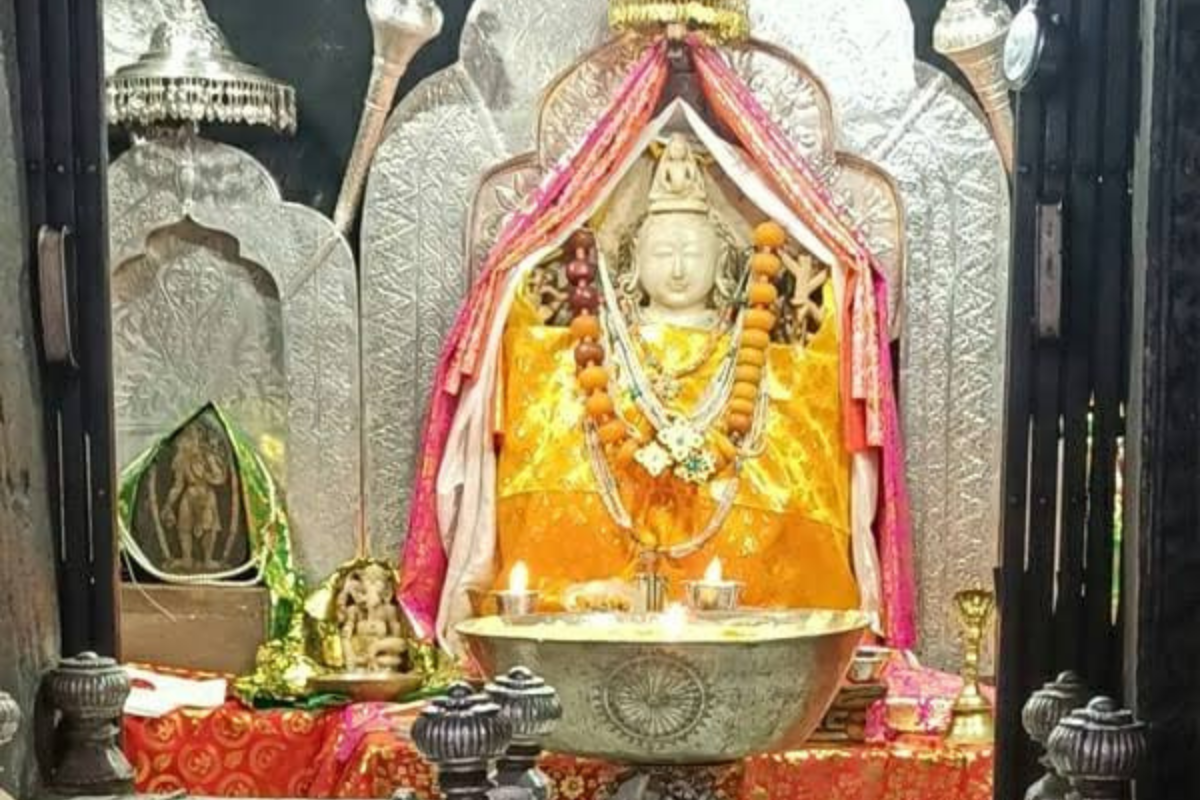Lahaul & Spiti district administration’s advisory to tourists not to go beyond Darcha
In view of the inclement weather and snowfall the national highway Manali-Leh had been officially closed for all types of vehicles on 7 November.
Trilokinath is the most sacred pilgrimage after Kailash Mansarovar. Speciality of this temple is that Hindus worship Trilokinath deity as Lord Shiva while the Buddhists worship the deity as Arya Avlokiteshwara and tibetans call it Garja Fagspa.

Source : Google Images
Along with being one of the most beautiful and serene places in the country, Himachal Pradesh is also popularly known for having a religious significance. Since, each district of Himachal Pradesh is blessed with innumerable temples, some of the districts are also popularly known for having both temples and monasteries. Each of which has a specialty, that generates curiosity amongst people of different religions to know more about these temples and explore them.
If we see from the point of view of architecture, the distinct styles of architectures representing distinct eras of spiritual belief have been noticed throughout the state. Himachal Pradesh is a northern Indian state in the Himalayas. Himachal Pradesh has 12 districts and each district has its own speciality.
Let us take you through a virtual visit of a temple in Lahaul-Spiti district of Himachal Pradesh which is a religious amalgamation of Hindu and Buddhist ideologies. Though, being the least populated amongst all the districts, Lahaul-Spiti is known as largest district of the state on the basis of area. Lahaul Spiti is located in the northern part of Himachal Pradesh. It is home to various sacred pilgrimages. In this district a distinctive temple Trilokinath is situated at a distance of 100 kms from Manali.
Advertisement
Trilokinath ‘a place which has been named after the name of deity in the temple’ is a world famous shrine of Trilokinath “the lord of the three worlds” which is yet another name of “Avalokiteshwara”, the popular Bodhisattva. It is one of a kind temple, which is worshiped equally by Hindus and Buddhists. As per the stone inscriptions which were found in the temple complex in the year 2002 it has been factually proved that the temple was constructed between the end of 9th century and in the beginning of 10th century. The archaeologists believe that Triokinath temple represents the art style of Kashmiri-Kannauj. The stone inscriptions describe that the temple was made by Dvanjra Rana (who is now believed to be the ancestors of present Ranas and Thakur rulers of Trilokinath village). It is also believed that King Shail Varman (the founder of Chamba town) was the one who helped them to construct the temple in one of a kind architectural style i.e. ‘Shikhar Style’. As we also get to see the Laxmi Narayan temple in Chamba built in Shikhar style architecture. Trilokinath is the only temple in Lahaul valley which has been built in ‘peak-style’.
The dynasty of Mahayogi Siddha Charpati Dar (Charpath Nath) also contributed a lot towards the construction of this holy shrine. He is believed to have a great devotion and faith in Boddhisattva Arya Avalokiteshwara and it is believed that he has composed 25 verses in praise of Arya Avalokiteshwara which is known as ‘Avalokiteshwara Strotan Chhedam’.
On the head of lord Trilokinath’s idol Lalitasan Lord Buddha’s idol is settled. The idol is made up of marble. There are various localized credence’s associated with the temple. The traditions of worshiping the deity based on Buddhist traditions as per ancient beliefs are still being followed. This is why the prayers are still performed according to Buddhist traditions only. The temple is popularly known for various local festivals and Mahakumbh. Mahakumbh is celebrated once in every 12 years. Huge numbers of devotees visit the temple during local festivals and Mahakumbh. Mahakumbh is mostly celebrated by Buddhist community.
Speciality of this temple is that Hindus consider Trilokinath deity as Lord Shiva while the Buddhists consider the deity as Arya Avlokiteshwara and tibetans call it Garja Fagspa. It is the most sacred pilgrimage after Kailash Mansarovar. Which is why, indeed, Himachal Pradesh is considered as Devbhoomi.
Manisha Persheera
Advertisement